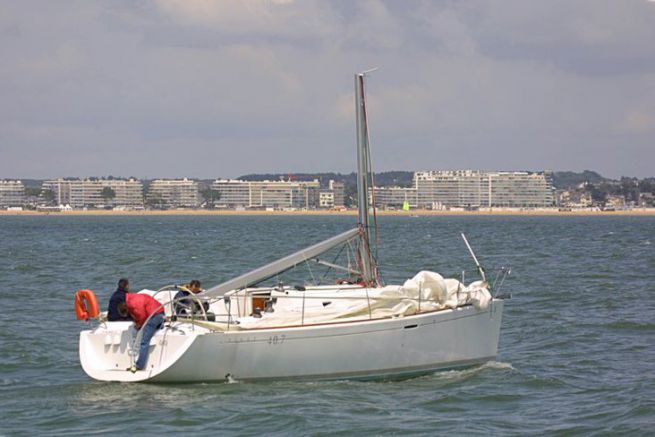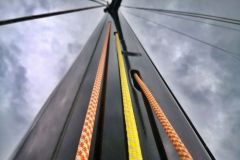This winter the Class 40 Crosscall was overturned by a wave off the Azores. The boat made a 360 and the mast pierced the cockpit creating a huge waterway. The boat remained between two waters for 11 hours before the two skippers were rescued by a Portuguese Navy helicopter.
Prevent to avoid dismasting
In order for a sailboat to dismast, one part of the rigging must be loose. When turning over, the pressure on the rotating mast underwater is such that it has a high chance of breaking. However, the majority of dismastings are due to broken cables or crimps. Insurers also advise, when not required, to change the standing rigging every ten years.
In addition to the crimps, the forestay, which is hidden by the furling tube, should be regularly monitored. In case of malfunction of the reefing-furling system, it can become dislodged. At the very least, a visual inspection of the rigging at the beginning and end of the season remains a good means of prevention.
What to do if the sailboat still dismasts?
The first thing to do is to ensure the safety of the crew. If no one is injured, you will not have to take any additional risks, as you will not be able to recover a man overboard with a mast hanging in the water. If you are within VHF range of the shoreline, try to notify rescue. Be careful, often the VHF antenna is placed at the masthead on a sailboat. It is very likely to be damaged. Call instead with a portable VHF. Notify CROSS of your situation. Then it's the safety of the boat that has to be taken care of.
Usually the mast breaks at one spreader stage. It is important to avoid at all costs that pieces of the mast ram against the hull. Depending on the sea state, you may therefore be forced to free the entire rigging and let it sink. Also resist the urge to start the engine as there is a high risk of getting a piece of the propeller.
Cut the shrouds that hold the mast to the deck with a pair of guy wire cutters or, failing that, a hacksaw. A good knife is often useful for cutting the genoa which is wound on the forestay. This will allow you to reach the furling line, which you will then have to cut as well. In the water the mast will act on the boat like a floating anchor, stabilising the daggerboard.
If you decide to retrieve it, secure it as soon as possible using the halyards and hoist it using the winches. Be aware that it can be very difficult to get it back on board with the sails still furled. Every situation is different, it will be up to you to decide whether it is worth saving all or part of the rigging and sails.
Once the housework is done, you can try to go home on your own, or wait for help if this is not possible.










